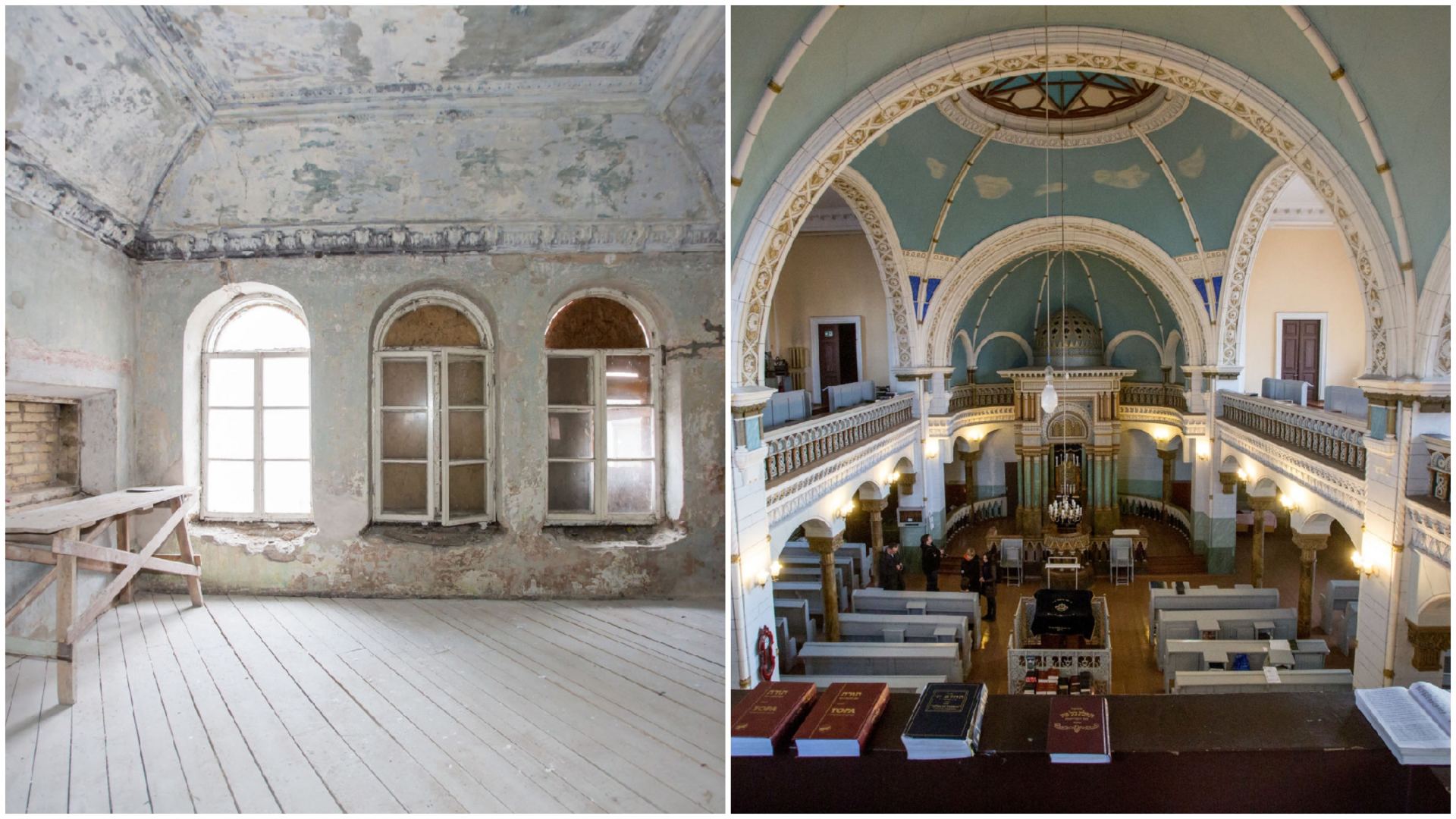
… If you call the Choral Synagogue the fortunate daughter, then another surviving synagogue near the bus station and train station could be called the poor stepdaughter in terms of appearance and visitors. The building located at Gelių street no. 6 only bears slight resemblance to a house of prayer. Restoration of the abandoned building began recently, in 2015.
Using several sources of financing, this synagogue has been slowly getting back on its feet over the last two years to become what it once was, a house of prayer. It’s said that it was the first stop for Jews arriving in Vilnius by train from all points in Lithuania. That’s hardly surprising, since the synagogue is right next to the railroad tracks!
This synagogue was in a state of imminent collapse until 2014 and its rebirth began with a “STOP” ribbon put up around it, followed by work to strengthen the roof. Over the three years since repairs began, great progress has been made. But it probably won’t be completed in 2017, it will take years longer.
The Lithuanian Jewish Community took over the synagogue at the end of 2013 [sic]. “We received news just before Christmas it was collapsing. When I arrived I saw part of the wall had indeed collapsed. It’s good no one was injured,” Martynas Užpelkis recalled about the start of the renovation of the synagogue.
… The official name [of the Gėlių street synagogue] was different: the Zavel Peisakhovich Germaize Synagogue. He was the merchant who owned the house of prayer. [Note: the synagogue was also called Sadowa synagogue after ulica Sadowska in Polish Vilnius, and Benjamin Netanyahu’s grandfather worked as a rabbi at this “travellers’ synagogue” which also featured a soup kitchen for a time, and was said to be the only synagogue in Vilnius open 24 hours per day–translator].
According to Lithuania’s Cultural Heritage Department, the brick-and-mortar synagogue was built in what was then the bustling neighborhood around the train station in the early 19th century, between 1817 and 1833. The brick-and-mortar synagogue was built where a wooden synagogue had stood prior.
It was reconstructed and expanded numerous times at the end of the 19th century, and operated until 1940. After World War II it shared the fate of many synagogues in Lithuania, becoming a warehouse, and there were workshops set up inside. Later it was divided into residential apartments, and the scars of this division are still visible on the bare walls of the building undergoing reconstruction.
Despite all that, the building experienced its worst period at the end of the 20th century, when the completely abandoned and dangerous building attracted homeless people who used it as a shelter, often posing a danger to themselves as well as the surviving walls of the synagogue.
“It’s know that in 1817 many buildings burnt down here, including the synagogue, which was made of wood. After that the brick building was built. That’s what’s there now, the remains of the brick synagogue. So this year marks 200 years since the fire and the onset of construction of the brick synagogue,” Lithuanian Jewish Community heritage protection specialist Martynas Užpelkis explained.
The Cultural Heritage Department and the Goodwill Foundation are providing funding for the synagogue reconstruction. “To date the roof has been repaired and the cupola has been restored. Everything is prepared for work on the walls. As I understand it no decision has been made on its use. That isn’t the most urgent matter at the moment. The goal right now is to restore and preserve as much that is authentic as possible,” Užpelkis said.
In total around 80 synagogues remain in Lithuania. Of these, half have the status of heritage sites. Twelve belong the Lithuanian Jewish Community.
Užpelkis explained: “This is the Community’s strategy for working with the municipal and regional authorities, especially where no Jewish community remains, to attempt to preserve buildings and to find public uses for them appropriate for the local population. This was how the wooden synagogue of Pakruojas was restored, it was adapted for public use, there will be a children’s reading room there. Another site being restored now is the synagogue in Žiežmariai. It will host cultural and museum activities.”
There are good examples of this in Kėdainiai, Marijampolė and Joniškis, where synagogues are used by the local communities.
From an article by Raimonda Mikalčiūtė-Urbonė
Full article in Lithuanian here.

